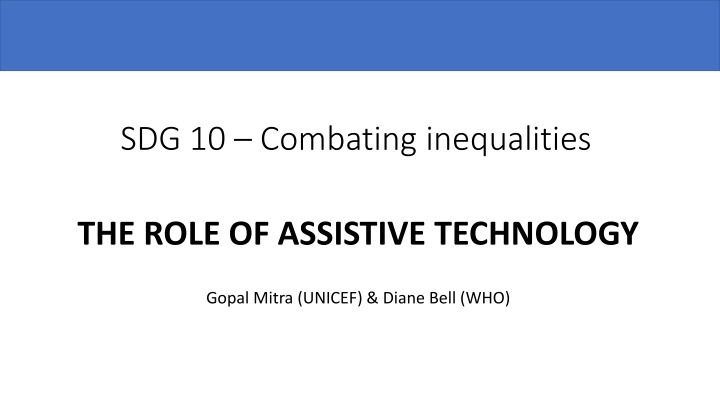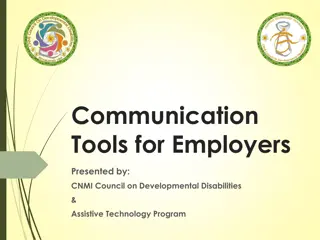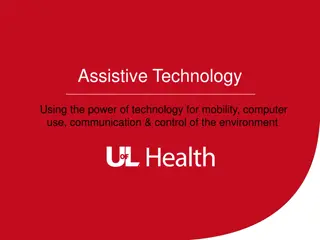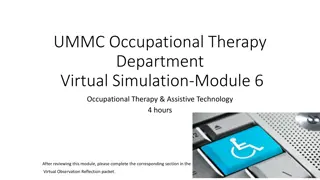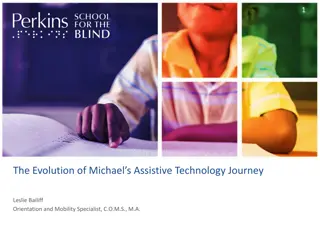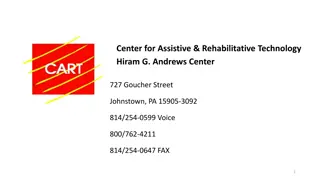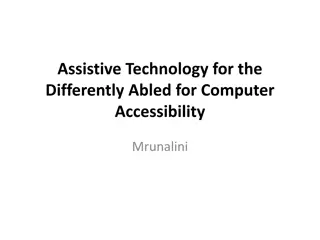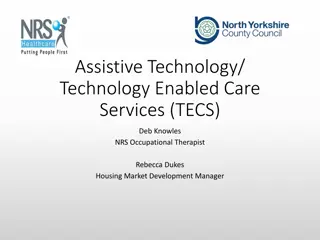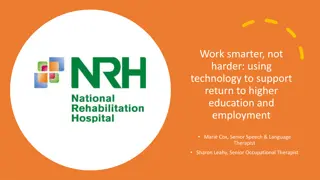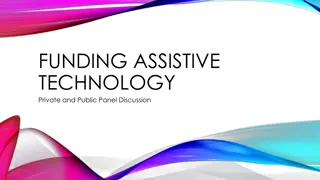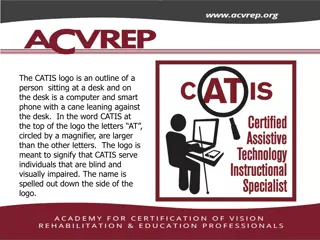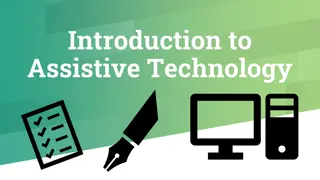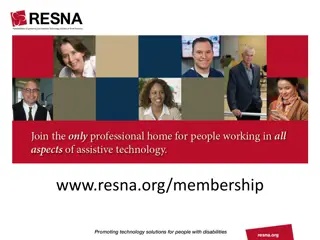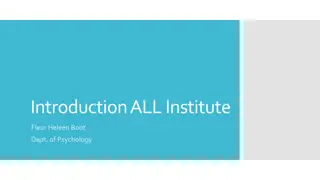Role of Assistive Technology in Combating Inequalities
"Exploring the impact of assistive technology in addressing inequalities and promoting well-being globally. Learn about the importance of assistive products and services, key facts on accessibility challenges, current status updates, and the structural framework for implementing AT policies. Dive into relevant literature focusing on AT for children with disabilities, mobility devices, and intellectual disabilities. Stay informed on the latest developments and initiatives in the field of assistive technology."
Download Presentation

Please find below an Image/Link to download the presentation.
The content on the website is provided AS IS for your information and personal use only. It may not be sold, licensed, or shared on other websites without obtaining consent from the author.If you encounter any issues during the download, it is possible that the publisher has removed the file from their server.
You are allowed to download the files provided on this website for personal or commercial use, subject to the condition that they are used lawfully. All files are the property of their respective owners.
The content on the website is provided AS IS for your information and personal use only. It may not be sold, licensed, or shared on other websites without obtaining consent from the author.
E N D
Presentation Transcript
SDG 10 Combating inequalities THE ROLE OF ASSISTIVE TECHNOLOGY Gopal Mitra (UNICEF) & Diane Bell (WHO)
TERMINOLOGY TERMINOLOGY http://www.who.int/phi/implementation/assistive_technology/phi_gate/en/ Assistive technology: Is an umbrella term covering the systems and services related to the delivery of assistive products and services. Assistive products: (hearing aids, wheelchairs, crutches etc.) Any external product (including devices, equipment, instruments or software), especially produced or generally available, the primary purpose of which is to maintain or improve an individual s functioning and independence, and thereby promote their well-being. Assistive products are also used to prevent impairments and secondary health conditions.
KEY FACTS KEY FACTS Globally, more than 1 billion people need 1 or more assistive products With an ageing global population and a rise in noncommunicable diseases, more than 2 billion people will need at least 1 AT product by 2050, with many older people needing 2 or more. Today, only 1 in 10 people in need have access to assistive products: High costs Lack of awareness Lack of availability Lack of trained personnel No policies and/or financing.
STATUS UPDATE STATUS UPDATE Task team co-ordination Task team constitution: oNote: Cross-cutting plus section in chapter oNominations for contributors/authors oInvite post meeting oInitial e-meeting week of 23 May Member state survey some pertinent AT-related questions
SECTION STRUCTURE SECTION STRUCTURE Legislation / governance wrt AT policies at a country level oInclude case studies Current situation re AT: oStatus and trends, as well as met versus unmet needs (access) UN activities wrt AT: oReport on work of WHO (GATE) re 50 APL oIntegrated service provision, product standards, procurement of AT oOutcomes of GREAT Summit in August (research, education, innovation)
LITERATURE LITERATURE Assistive products and SDGs AT for children with disabilities (UNICEF) NATFrame key components for AT policies Position paper on the provision of mobility devices in less resourced settings Intellectual disability and AT: Opening the GATE
KEY MESSAGES KEY MESSAGES AT is cross-cutting, so What is the best way for us to collaborate, ensure inclusion in most, if not all, chapters? Sharing of resources? Bearing in mind, limited empirical evidence or other literature.
